15 incredible places on Earth that are frozen in time
Where time stands still
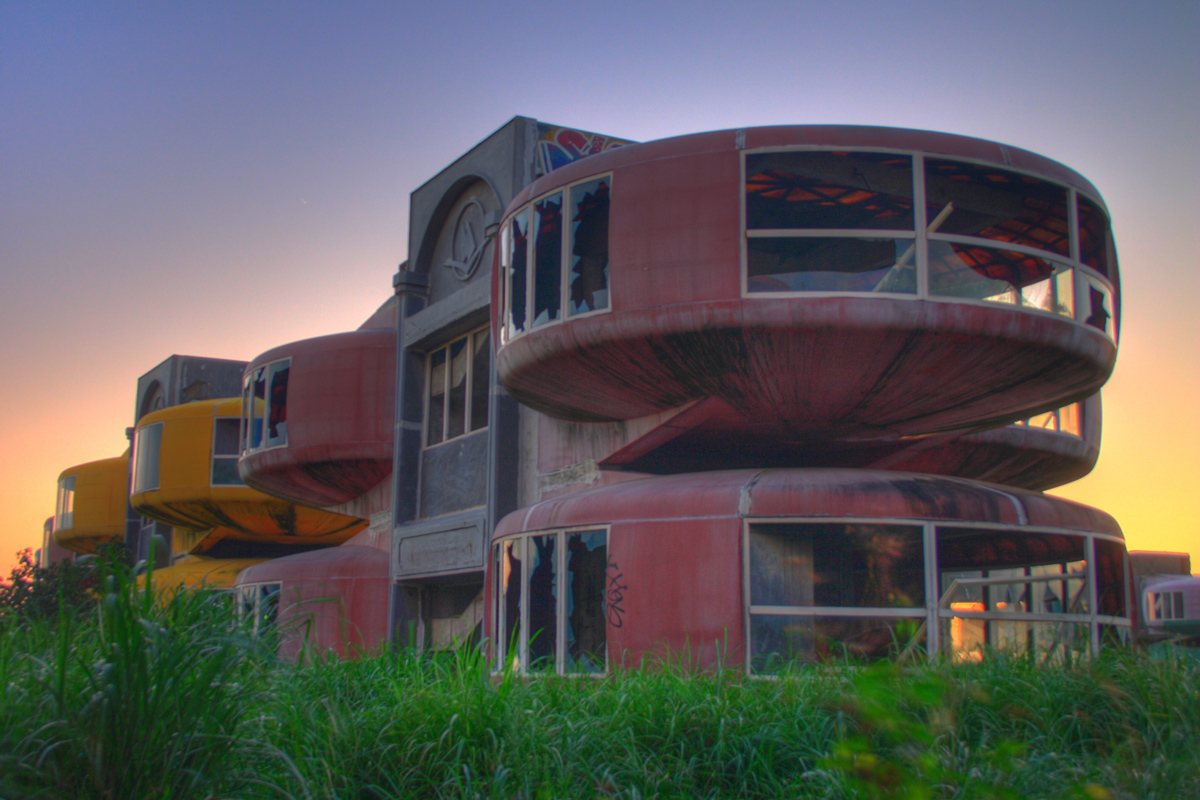
There are places in this world that never stop changing, like Rome — built on the ruins and debris of its previous iterations — or New York, with its ever-rising skyline.
And then there are places where time stands still. Whether frozen in time by natural disaster or simply left behind because no one cared to stay, these spots stand virtually undisturbed, encapsulating a moment of the past.
Pompeii
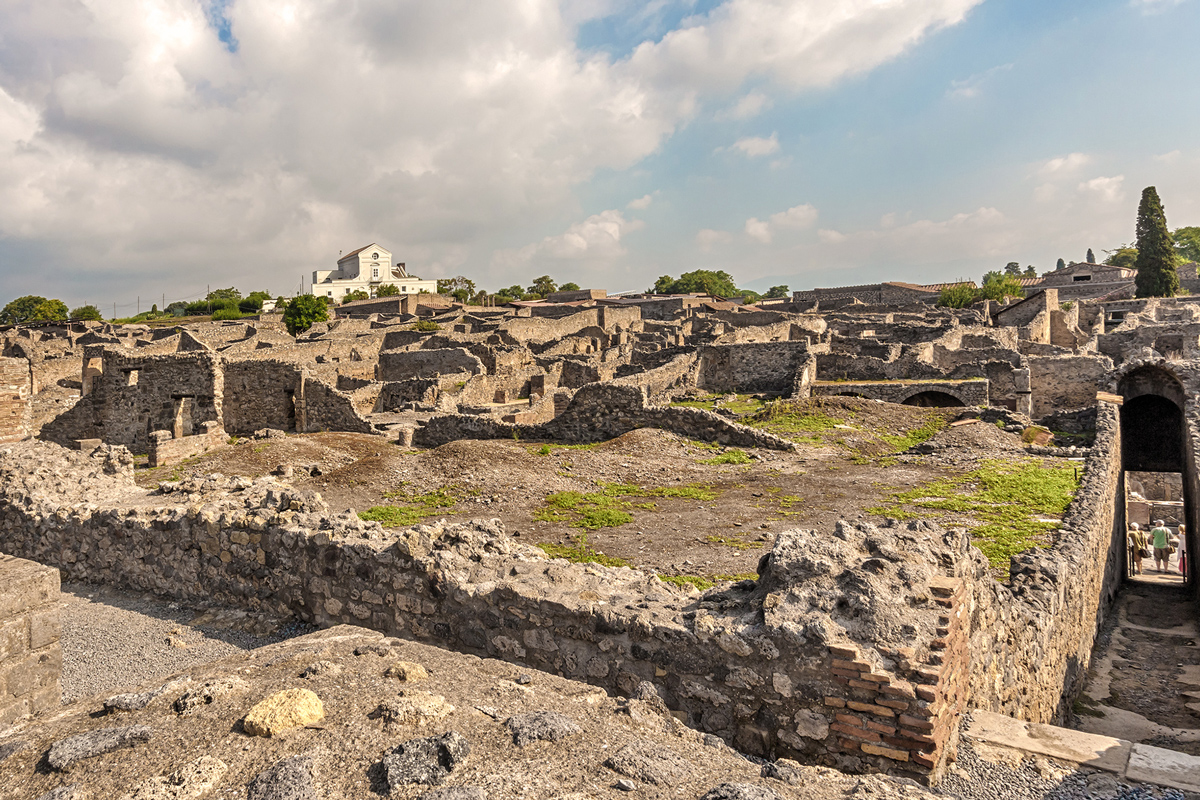
The ancient city of Pompeii was arrested in time in A.D. 79 by Mount Vesuvius. The volcano buried the town and any inhabitants who could not evacuate in a thick layer of volcanic ash. The bodies of the dead decomposed, leaving behind voids in the ash that archaeologists later filled with plaster and excavated, resulting in the eerie death casts that made Pompeii famous. But the volcano preserved other things too, from advanced plumbing facilities to colorful carved frescos and graffiti. Excavations have revealed the nitty-gritty details of life in A.D. 79, including at-home first aid equipment and tiny barbecues that probably cooked quick, casual meals.
Two Guns, Arizona

Among the American West's weirder ghost towns is Two Guns, an abandoned roadside attraction. According to Atlas Obscura, Two Guns was nothing but a few scattered homesteads until the early 1920s, when it became a travel stop on what would morph into the famous Route 66. An eccentric entrepreneur named Harry Miller leased the site, building a mini-zoo and fake Native American ruins. Exploiting the late 19th-century deaths of a group of Apache warriors killed during a battle with the Navajo people, Miller gave tours of the cave where they died and even sold skulls he said were from those Apache. Miller later shot the landowner who leased him the land, but was acquitted. In 1929, after a fire and a legal battle over the land ownership, Miller left. Route 66 soon left too, rerouted across the canyon. Two Guns changed hands a few times before burning down again in 1971. Today, only a few stone buildings and part of the old zoo's mountain lion enclosure remain.
Salton Riviera, California
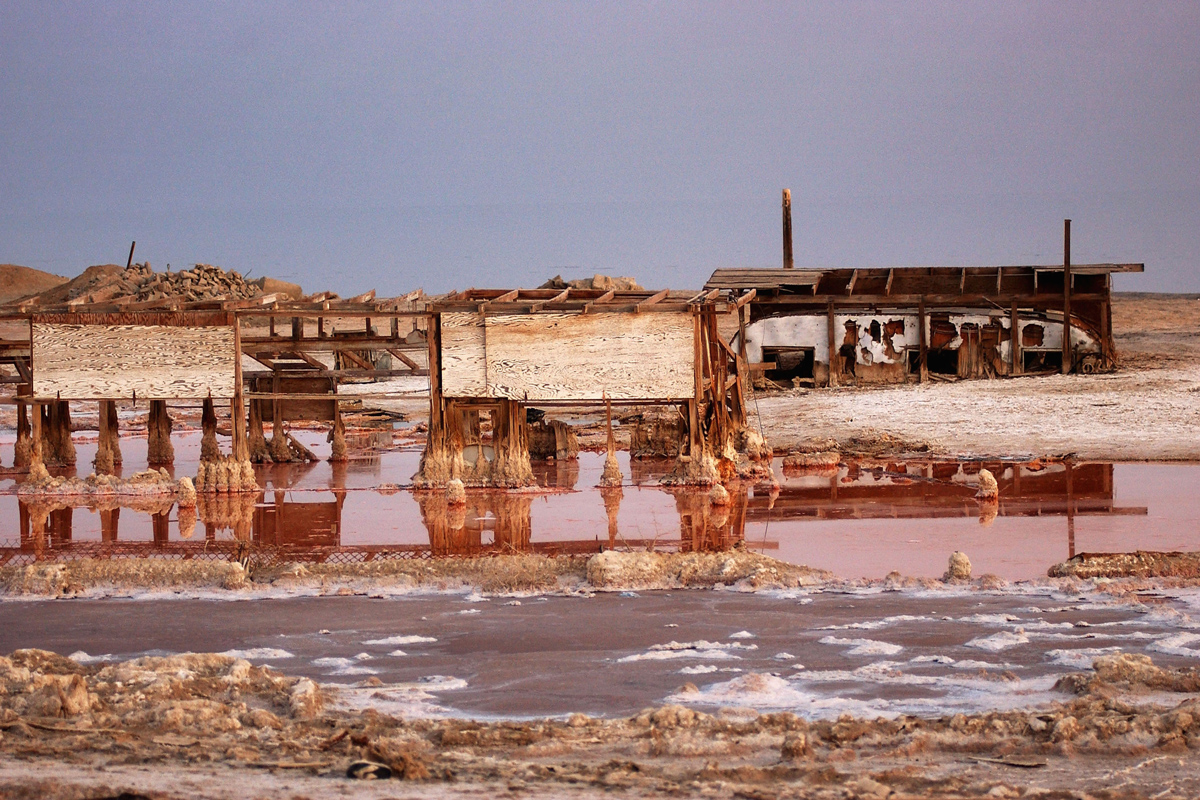
When the Salton Sea formed, quite by accident in 1905, people called it a miracle. Thanks to an irrigation accident, water from the Colorado River filled a formerly dry lakebed in southeastern California. The resulting lake, the Salton Sea, became a resort attraction (it's still a state recreation area today).
Within a few decades, though, the disaster of the Salton Sea became apparent. With no outlet, the lake concentrated both salt and agricultural runoff, turning it into a stinking environmental disaster, complete with piles of dead fish along the shore. Most of the buildings near the lake have been abandoned, and local authorities have agreed to let the Salton Sea wither. As of 2018, 40 percent less water is being directed into the Salton Sea than at its inception, according to The Verge, which will gradually lower the lake level by 20 feet (6 meters). As lake turns to dust, more residents may flee, according to The Verge; the air in the Imperial Valley is among the worst in the country.
Hashima Island, Japan

Once the site of a major coal-mining operation and home to more than 5,000 people, Japan's Hashima Island is now heavily built up — but empty. The island is a mere 16 acres (6.3 hectares) in area and is almost entirely covered by the marks of humanity: a seawall, multi-story buildings and an abandoned shrine. The island was abandoned in 1974 after all its coal was depleted. In 2009, it opened to tourism, and, in 2015, it became a UNESCO World Heritage Site. If you can't get there in person, you can tour the island in great detail via Google Earth.
Get the world’s most fascinating discoveries delivered straight to your inbox.
Pripyat, Ukraine

It was a bit like a modern Pompeii. On April 26, 1986, an explosion at the Chernobyl Nuclear Power Plant caused the release of 5 percent of the reactor's radioactive core. According to the World Nuclear Association, 28 people perished in the following weeks because of acute radiation sickness. In the nearby town of Pripyat, 45,000 people had to leave overnight; ultimately, more than 220,000 people would have to evacuate the contaminated zone around the plant.
The buildings left behind are full of shattered glass and abandoned furniture. An abandoned Ferris wheel sits by a long-unused merry-go-round. Nature has reclaimed the catastrophe zone, with wolves, moose and wild boar roaming where humans used to bustle.
Kolmanskop, Namiba
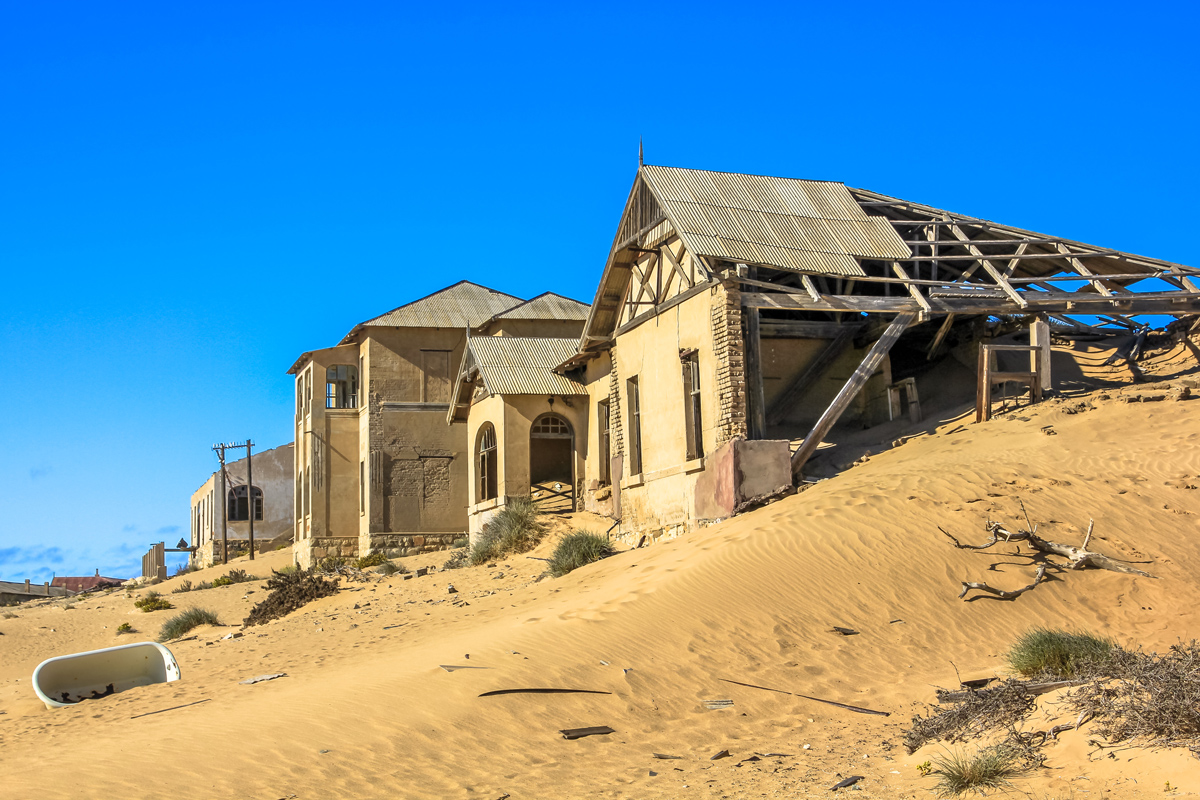
The bone-dry Namib Desert is a hard place for life to survive. The town of Kolmanskop didn't manage to.
Founded in the early 1900s after diamonds were discovered in the region, Kolmanskop was built by the Germans who controlled what is now Namibia at the time. The architecture is oddly Teutonic, with arched windows and wrought-iron railings. According to the now-ghost-town's website, residents survived thanks to water trucked in from 75 miles (120 kilometers) away. By the 1920s, the diamond mines were drying up and new deposits were found elsewhere. The town shrank rapidly, and it was finally abandoned for good in 1956.
Sanzhi UFO Houses

The Sanzhi UFO Houses were a row of oddly shaped pod-like buildings put up in the late 1970s as a resort on the northern tip of Taiwan. The two-story pod-buildings were never finished, but they were painted a cheery pink and yellow, making them look as though some friendly futuristic extraterrestrial had just dashed down to the store for a cup of sugar and might be back at any minute. These odd ghost buildings wouldn't last forever, though; they were demolished in 2010 to make way for new development.
Deception Island, Antarctica
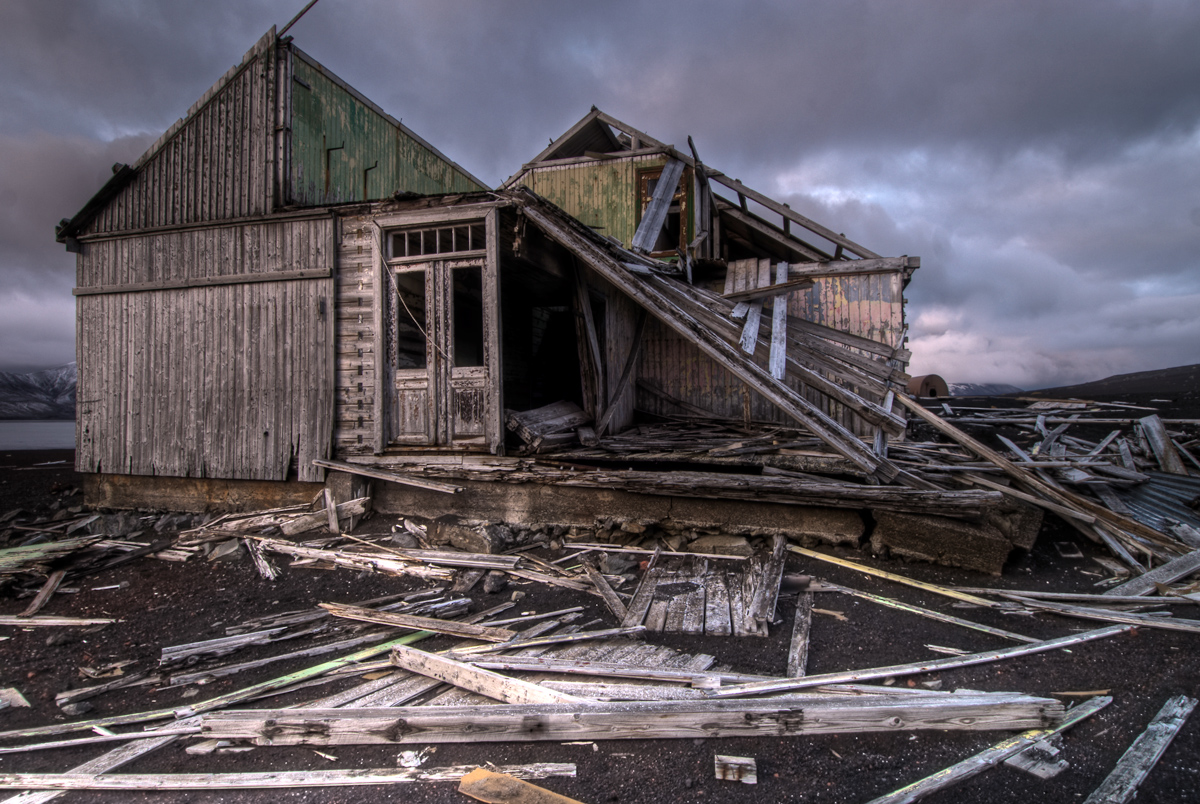
Can something qualify as a ghost town if it's on a largely uninhabited continent? Deception Island might. This outpost in Antarctica has been a whaling station and the site of several scientific labs, but it's also the caldera of an active volcano. In 1967 and 1969, that volcano erupted, destroying the British and Chilean scientific stations that were active at the time. According to Atlas Obscura, the island is now visited by the occasional seasonal science team and by tourists who enjoy views of the place's deserted airplane hangar and rusting boilers and tanks.
Craco, Italy
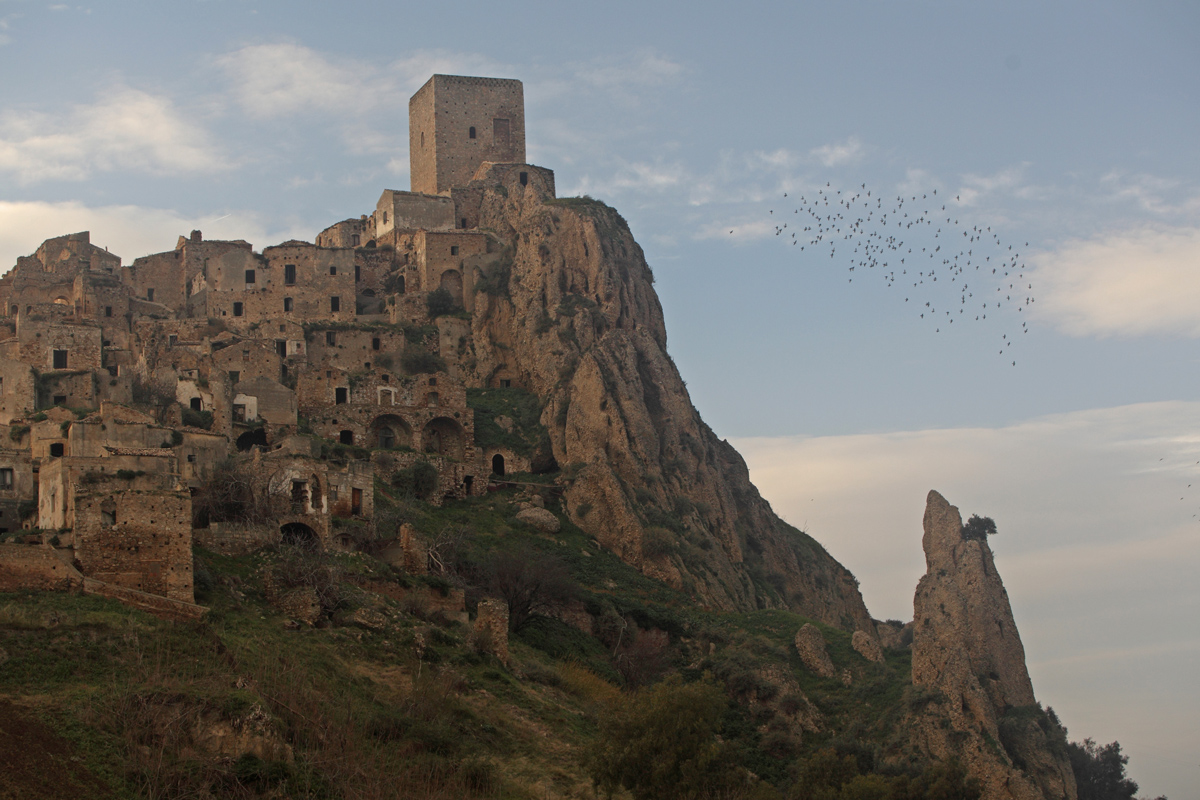
Located in the "instep" of Italy's boot, the village of Craco dates to A.D. 1060 (though monks and earlier settlers lived in this rugged region prior to that time). Throughout the Middle Ages, about 1,500 people lived in Craco at any given time. It had four plazas, multiple churches, and, by the 1800s, it was big enough to be split into two districts, according to the local historical society.
But Italy is a seismically active place, and the slopes where Craco was built are steep and unstable. In the mid-1900s, earthquakes and landslides damaged the town. In 1963, the last residents left, relocated to another village nearby. Today, the abandoned town is a historical site and tourist attraction.
Oradour-sur-Glane, France

A tragic casualty of World War II, Oradour-sur-Glane was destroyed by the Waffen SS in 1944. It was a horrific atrocity. On June 10 of that year, Nazi forces entered the village and rounded up its citizenry on the pretense of doing identity checks. Instead, they separated the village's men from its women and children and began to massacre them. They killed 642 men, women and children, then set the village on fire. Only a handful of people survived.
After the war, France decided to leave the village as it was in memory of the massacre. A Centre de la Mémoire stands at the sight to guide visitors through the abandoned buildings and execution sites. The village crypt contains artifacts like watches and clocks stopped at the time of the fires.
Bodie, California
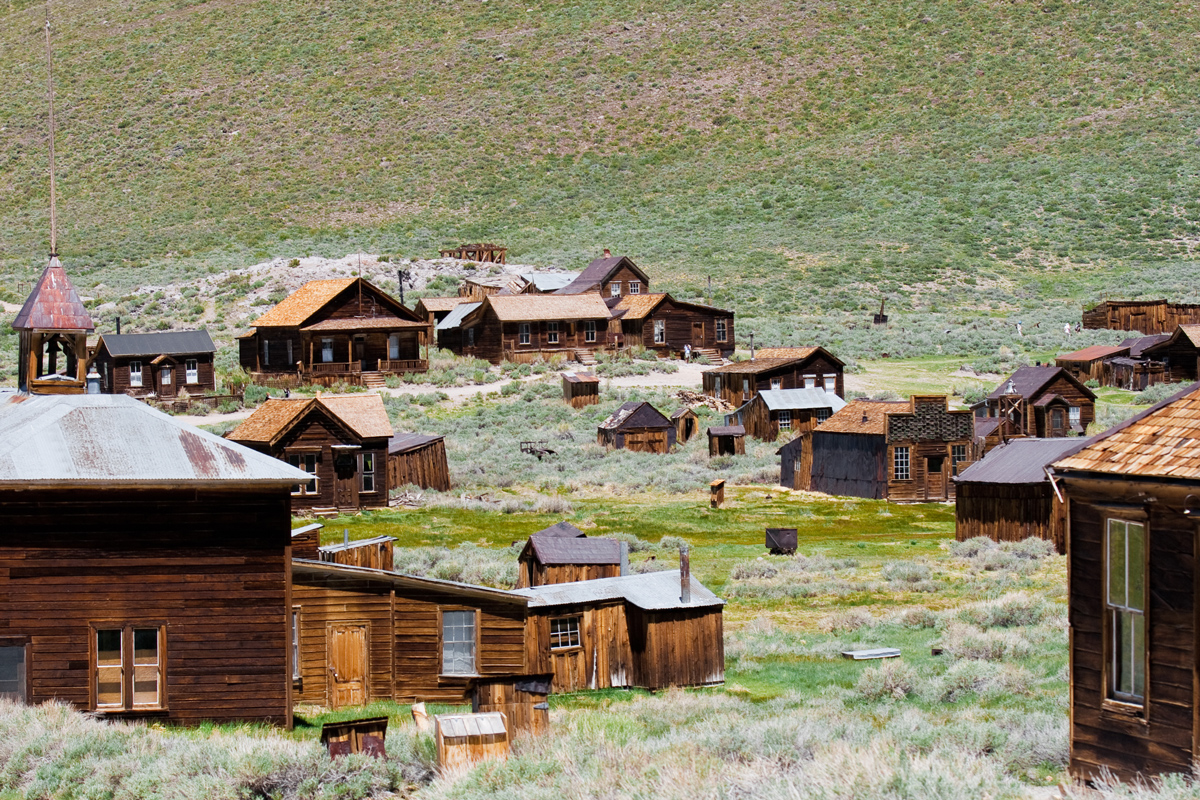
California's Gold Rush brought an influx of settlers hoping to strike it rich in gold. These settlers built boomtowns almost overnight — and abandoned them just as quickly when the gold veins tapped out.
Bodie, California, is one of those towns. Gold was discovered in the area near Mono Lake in 1875, according to the California Department of Parks and Recreation. The town of Bodie sprung up to house the miners working the vein. Since 1962, the former mine town has been a designated National Historic Site and a state park, left as it was when the last residents moved on.
Mandu, India
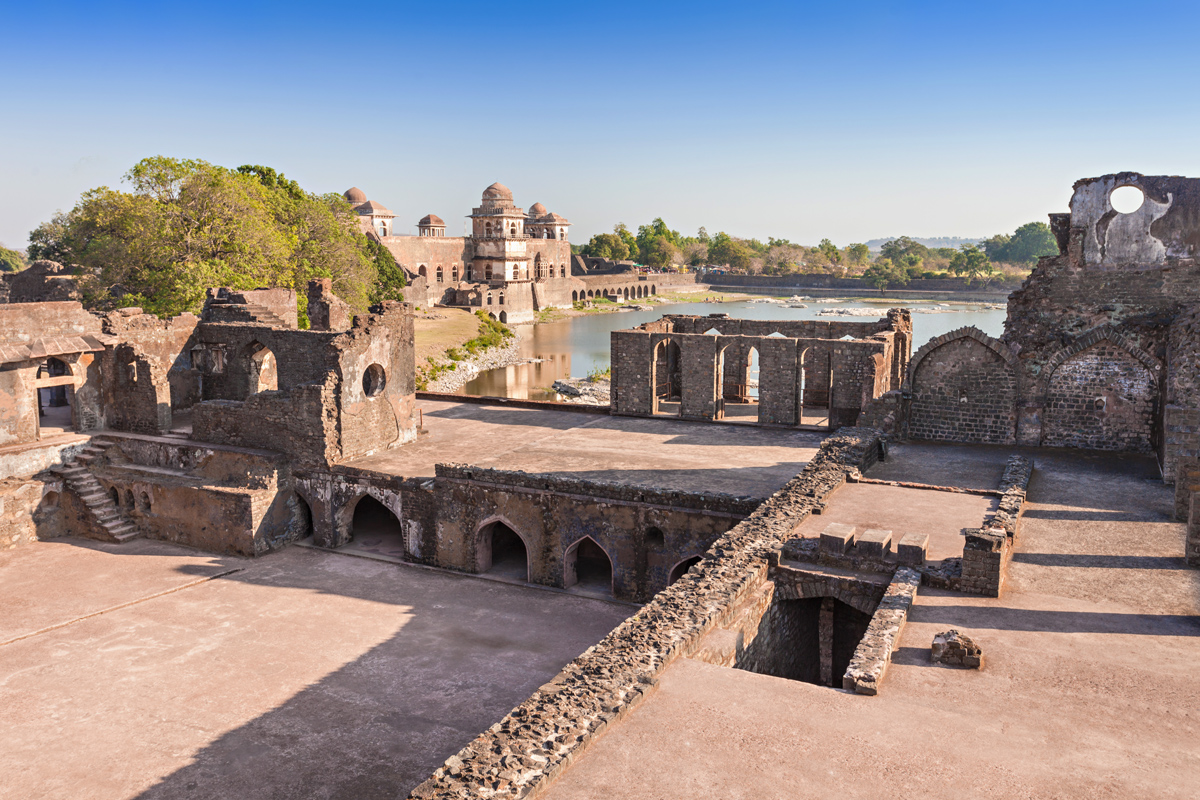
Mandu, in Madhya Pradesh, India, is a preserved town that dates to at least the sixth century A.D. It's known for its lavish architecture, including India's biggest fort and a massive palace constructed in 1508 and named for Baz Bahadur, who ruled Mandu from 1555 to 1562. According to legend, Bahadur fell in love with a singing shepherdess named Roopmati, whom he made his queen. But a Mogul army invaded Mandu, taking the city and kidnapping Roopmati. She is said to have poisoned herself to avoid the attention of the Mogul general.
Today, visitors can see temples, tombs and multiple palaces built in Mandu over the centuries. Perhaps the most famous is the Jahaz Mahal, or Ship Palace, which is built between two artificial lakes so that it seems to float.
Angkor, Cambodia
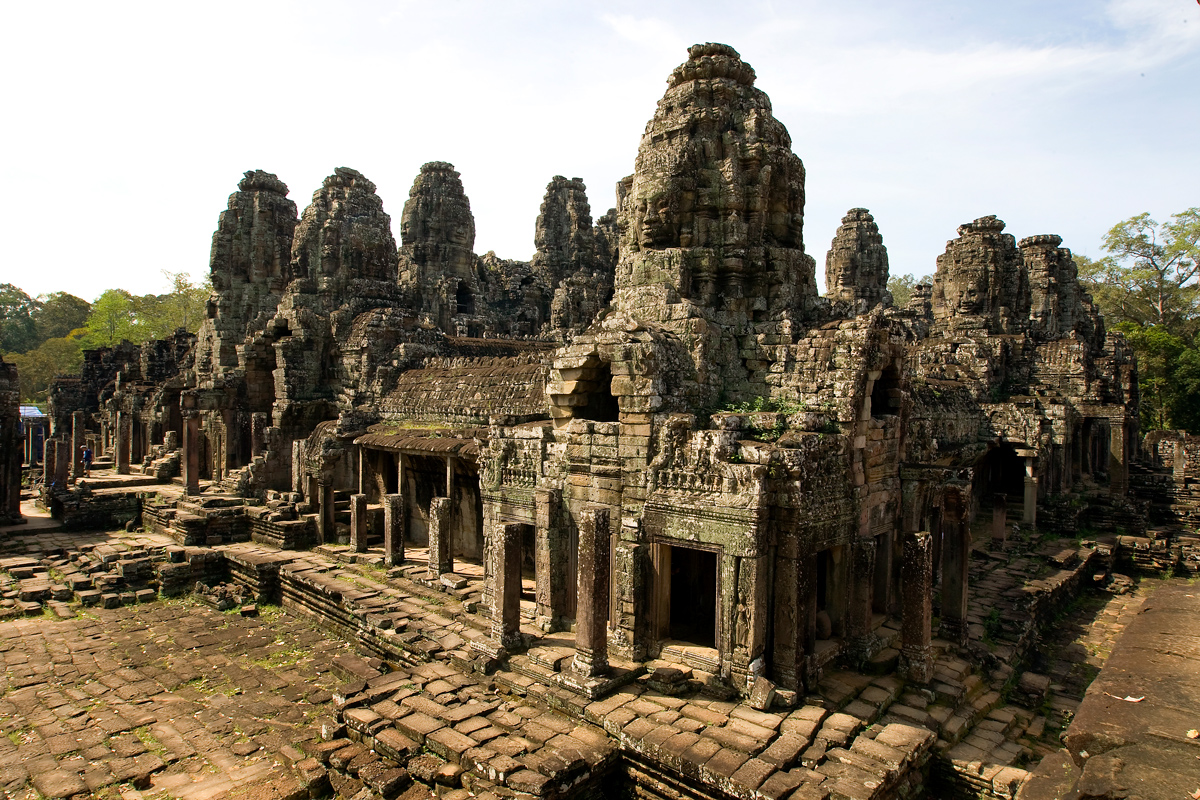
Another ancient-site-turned-tourist-destination, Angkor Wat is one of the largest temples ever built. It was constructed between about A.D. 1113 and 1150 as a Hindu temple, and was later converted into a Buddhist temple. The city surrounding Angkor Wat, Angkor, may have once been home to a million people.
Angkor is no longer a metropolis, but a UNESCO World Heritage site that archaeologists and conservationists are trying to save from encroaching jungle and damage by modern tourists. More than 100,000 people still live in the shadow of the temple, many living an agrarian lifestyle like the generations that came before them.
Tyneham, England
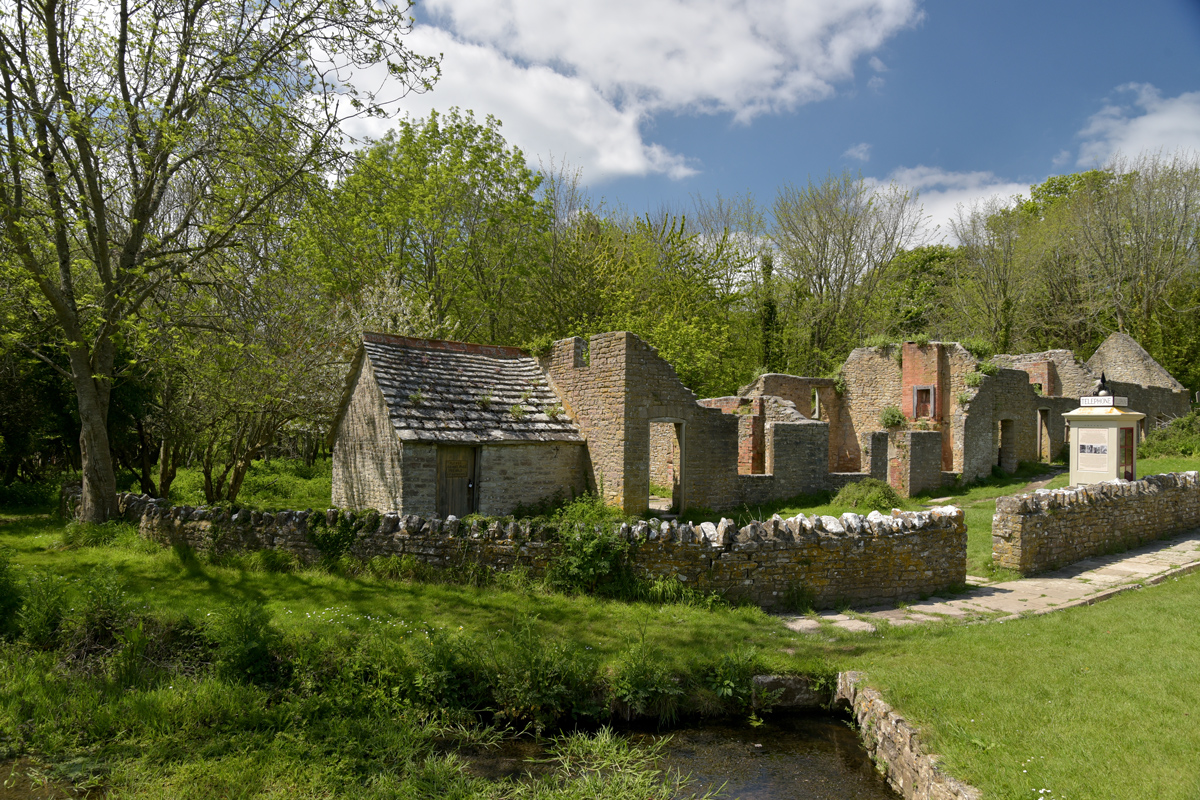
In 1943, the British government asked residents of Tyneham, England, to make a major sacrifice for the war effort: leave their homes. The villagers had a month's notice, the BBC reported, before the village and its surroundings were taken over as a tank firing range in advance of D-Day, the day in 1944 when Allied forces invaded northern France at Normandy and ultimately liberated France from Nazi occupation.
Tyneham residents, all 225 of them, were told they'd get to return to their village after the war, but the government ended up keeping the land for military training. The village has been empty since and is now in ruins. Stone and brick buildings stand quietly, their roofs and windows long-gone. Visitors are allowed in on weekends, and the old church has been reopened. It's used for occasional concerts and special services.
Humberstone, Chile
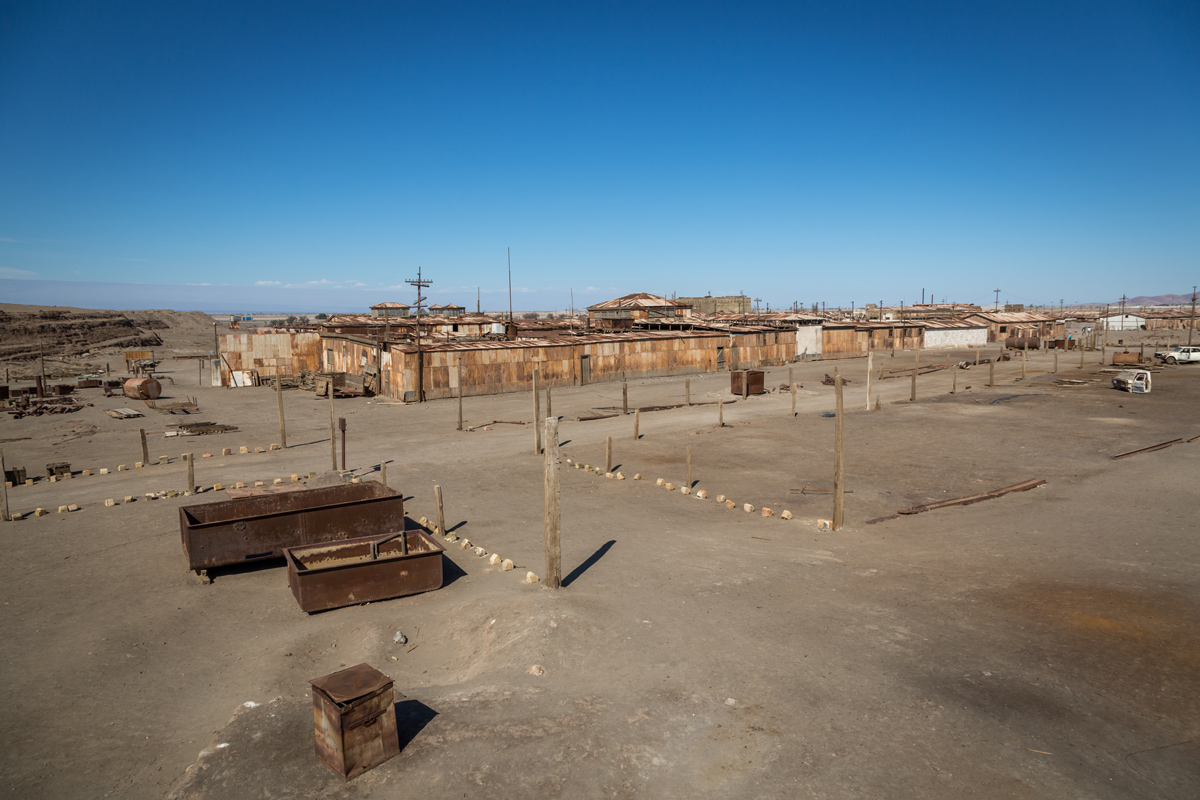
In the late 1800s, Chile experienced a rush not on gold, but on salt. Entrepreneurs and miners high-tailed it to the Atacama Desert, which is rich in potassium nitrate, or saltpeter. A major ingredient in agricultural fertilizers, saltpeter made up 80 percent of Chilean exports in the late 19th and early 20th centuries, according to the BBC.
One of the mining towns that sprung up in this saltpeter rush was Humberstone, founded in 1872. It was once home to more than 3,000 people, mainly saltpeter diggers and refiners and their families. But during World War I, Allied powers blocked Germany from importing saltpeter, and the Germans developed synthetic fertilizers in response. Saltpeter lost its value. Humberstone became a ghost town. The dry desert air has kept the rot away, and many of the town's buildings stand just as they did a century ago.

Stephanie Pappas is a contributing writer for Live Science, covering topics ranging from geoscience to archaeology to the human brain and behavior. She was previously a senior writer for Live Science but is now a freelancer based in Denver, Colorado, and regularly contributes to Scientific American and The Monitor, the monthly magazine of the American Psychological Association. Stephanie received a bachelor's degree in psychology from the University of South Carolina and a graduate certificate in science communication from the University of California, Santa Cruz.


